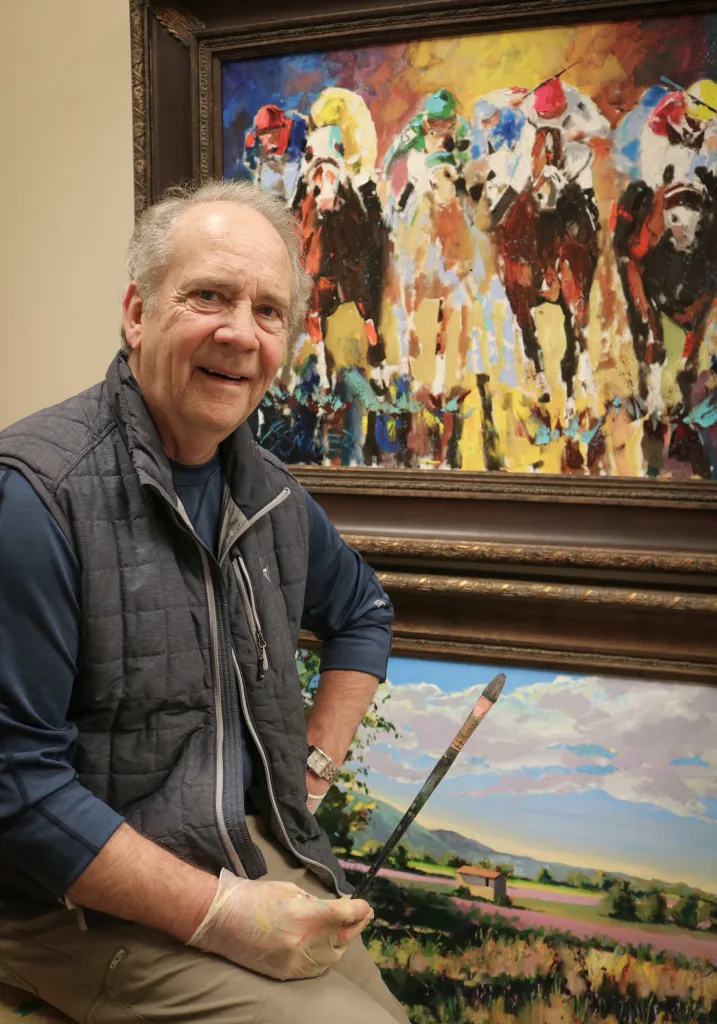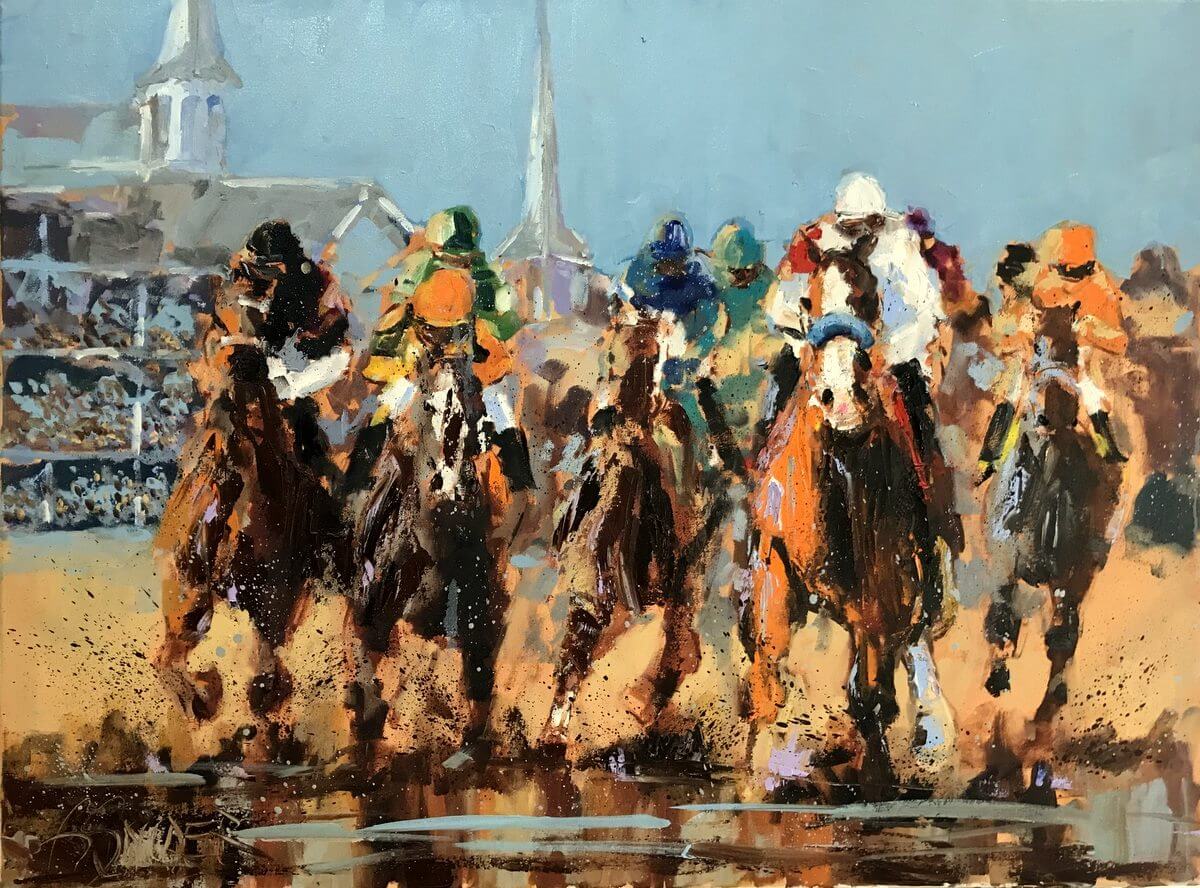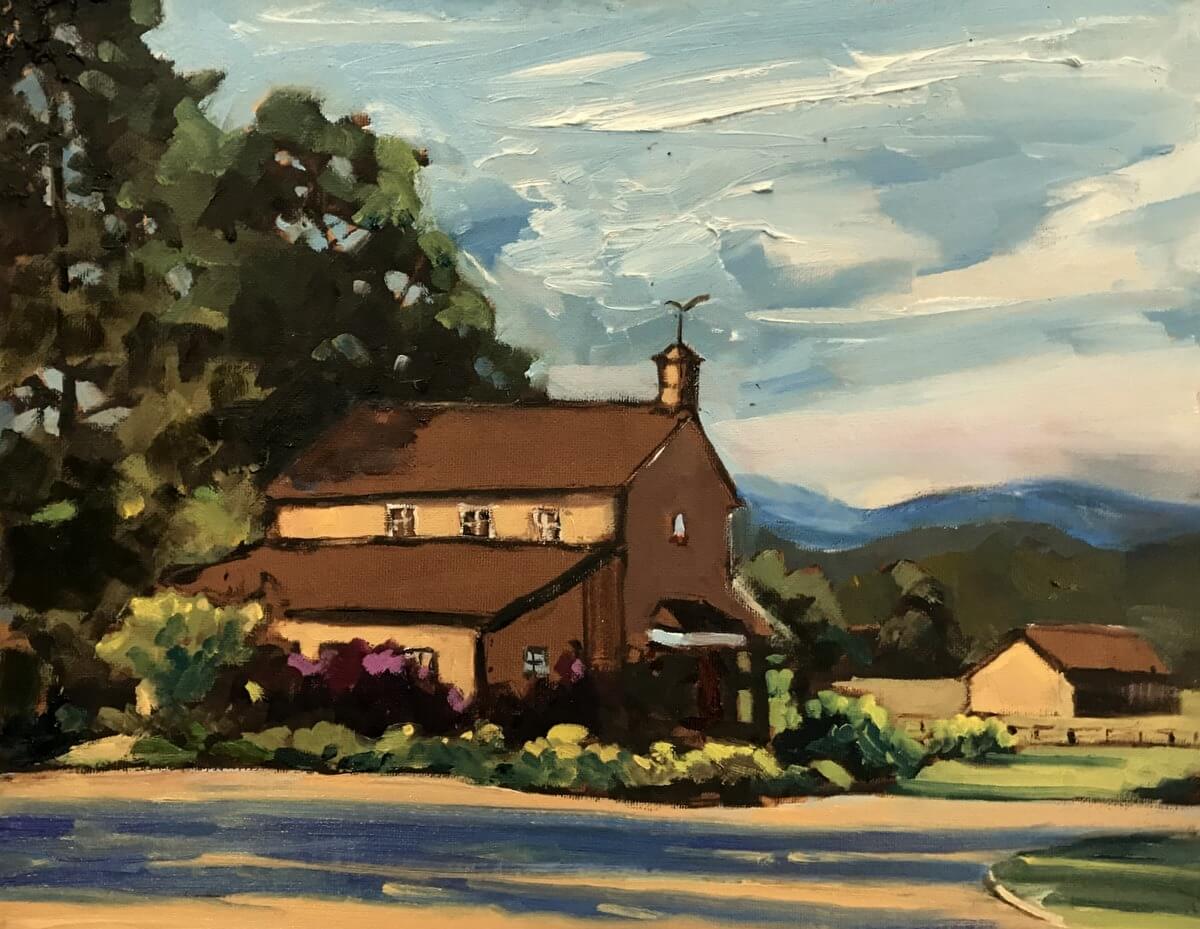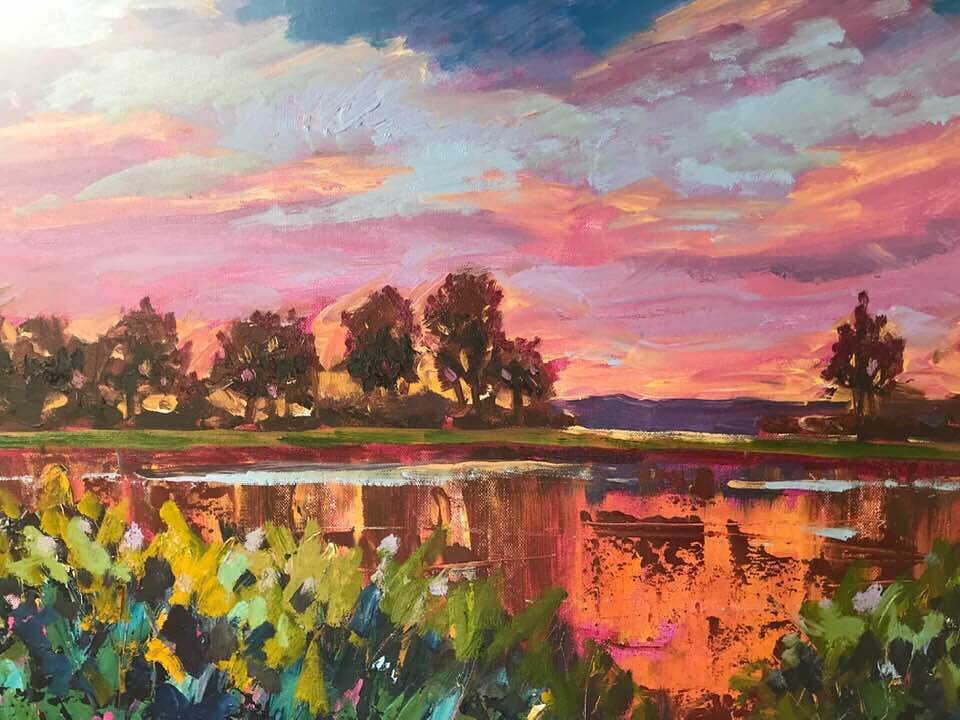Art Can Build a Bridge
In school, Bob Snider was no straight-A student. “I was always the kid in the back of the class, drawing pictures of the teacher. And I have the Cs to prove it.” Of course, as you will discover, those hours spent in the back of the class making caricatures were not wasted. They were Bob’s introduction to the world of art. “When I talk to people about art, I tell them, ‘Any of us can sing in the shower. Few of us can sing on the stage.’ Some call it talent. I call it a gift. If it is a gift, that implies that there is a Giver. So we have this gift that was given to us. What we do with it in response is accept that is a gift. God created beauty here, and I get to walk around in it and play with it.”
Allured by Beauty
In previous articles in our Flourishing Series, we covered the domains (or endowment) of the Good, the True, the Prosperous, and the Just and Well-Ordered from Amy L. Sherman’s Agents of Flourishing: Pursuing Shalom in Every Corner of Society. The next domain in our series is the Beautiful. The Thriving Cities Group defines this community endowment as the realm of creativity, aesthetics, and design. It includes “the visual aesthetics of the built environment and the artistic, cultural, and historic life of a community.”
At first glance, this domain might appear less important than others. Don’t things like economic opportunity and justice demand more attention? According to Sherman, the realm of art, design, and aesthetics is vital to community flourishing. God is the ultimate Source of beauty, and we reflect his beauty as image bearers in our use of imagination and skill to create something beautiful. God also uses beauty to captivate and allure us. Sherman writes, “Scripture speaks frequently of this, noting that beauty and how it is intertwined with God’s splendor, majesty, and glory (e.g., Ps. 27:4; 50:2; 1 Chron. 16:28-29; Isa. 4:2; 28:5, 33:17). It is not only his truth and goodness that draw us to God. We are attracted as well by his beauty.”

Draw Squiggles, Not Straight Lines
God is the wellspring from which all beauty flows, and our capacity to create art to reflect beauty back to him is a gift. God, the first and ultimate Artist, is also a great Storyteller, which brings us back to Bob. Now, if you were to draw a line representing Bob’s journey to becoming an artist, don’t draw a line from one point to another. Draw a snake-like shape or a squiggle because that is how his life story unfolded. Granted, he was an art major at Ouachita Baptist University, but he reasoned that the only options for art majors back then were to (1) teach art or (2) become an artist. With this reasoning, Bob decided to get an M.B.A. from the University of Arkansas and pursue a career in the Institute of Heraldry. Upon reporting to Fort Benning, he applied as an effective writing instructor but misspelled ‘writing’ in his application. “That shows you where I was academically at the time,” Bob says with a laugh. Bob didn’t get the job and ended up at the infantry school for the next two years.
After his time in the military, Bob landed a job on Senator McClellan’s staff in Washington D.C. He proved his mettle in the Beltway and went on to become the senator’s press secretary. For the next eight years, Bob ran McClellan’s Little Rock office. When his adventures in politics ended, the next chapter in Bob’s life was as an investment banker. That lasted for thirty years. At this point, you might think, “How does someone with a background in the military, politics, and banking become an artist?” Again, I direct you back to the drawing of Bob’s story. The road Bob took was not a straight path; it was a winding one with plenty of twists and turns.

A Halftime Decision
Nearing middle age, Bob took a class at his church on the book Halftime: Moving from Success to Significance by Bob Buford. Bob tells me (Chris), “The book was about how we’re all living longer, and you can only play so much golf. You need purpose in the second half.” Bob was at a crossroads at this point in his life. His wife of twenty-five years left him, and he wondered how the next chapter would take shape. Through this class, Bob realized something that set him on an entirely different trajectory. “It occurred to me that I can do whatever I want to do. So, I signed up for a beginning water media class at the Arts Center. Even though I had an art degree, it was never anything serious. But I just loved the idea of it.” For Bob, it was like reuniting with an old friend. The joy of imagination and creativity he enjoyed as a child was reemerging in him.
With a renewed passion for art and time on his hands, Bob dove into the world of watercolor head-first and took more classes in different mediums. “I was taking this [oil painting] class from Barry Thomas at Cook’s Landing on the Arkansas River. They gave me the canvas, the brushes, and this little palette. I saw what Barry was doing and did what he was doing but as a watercolorist. Very wet. Very loose. It was this tree reflecting on the water. It turned out well, so I took it to a gallery in Hot Springs that was carrying my watercolor works. It sold in the first week for $800, which was a whole lot more than I made with watercolor. Barry told me, ‘You need to paint bigger,’ so now I paint big.”
Two Worlds Merge
The art world was ever-expanding for Bob. In the next chapter of his life, Bob saw two of his worlds merge. It started with a Kingdom Builders class Bob took at church. One day, the church’s pastor saw Bob in the class. He took him aside and said, “I wanna talk to you. Somebody tells me I need to talk to you because we’re thinking about creating a ministry for painting and art.” Hearing this must have been music to Bob’s ears. He thought for a moment and told the pastor, “Okay. I’m your man.” Given his background and experience in the world of the arts, Bob was the right guy at the right time for such an opportunity.
“I knew how to put on a juried art show. First, you get a juror. Then, you put out a call to artists in the artist community, which I knew a lot of at the time. [For this arts festival, we gave artists the] challenge to create something based on the twenty-third Psalm. We had probably three hundred entries. It was a three-day arts festival. We had prizes and a judge. The church even bought one of the pieces. It really was a big, big deal. The point of it was to build a bridge to the arts community. It was a way of saying [to the arts community], ‘We want to build a bridge’ because when you think about it, we are all art collectors. If you have anything on your wall, you’re an art collector. The world of art collectors is vast; it’s everybody, from the art museum group to the country club group to the church group. Wherever. Art goes everywhere.”
The arts festival was a smash and went on for several years. Themes for later festivals included Genesis, the Prodigal Son, Messiah, and Jonah. “When we did a festival on Jonah, the director of the Arkansas Symphony Orchestra, who was Jewish, wrote a symphony on Jonah and had the symphony perform it. Bob was truly in his element in bringing churches and the arts community together. However, after consulting with churches in Nashville, Dallas, Milwaukee, and other cities, Bob realized something. “I figured out pretty quick that church staffs have plenty to do, and they don’t want to take on another task. Eventually, the arts festival ran out of gas because of the effort that went into it.”
Bob and Martha
There is, however, one more wrinkle in the arts festival chapter of Bob’s life. One day, he was hanging art for one of the festivals when his eye caught a woman with jet-black hair and dark eyes. Bob was stunned by the beauty he beheld. “She was just a knockout. I asked someone, ‘Who is that?’ and they told me, ‘That’s Martha Turner.’” Bob knew Martha’s husband but was told the couple was getting a divorce. “I was a single guy in Little Rock for fifteen years with no prospects. I just about gave up on that so I could, you know, focus on spiritual things.” But seeing Martha that day made Bob strongly reconsider the bachelor life. Fortunately for Bob, sparks flew, and love between the two blossomed. They married two years later, and the first thing they did was build an art studio.
Snider Studio and Gallery is located next to the couple’s home in Roland, Arkansas. Both home and studio are, as you might guess, adorned with paintings, sculptures, etc. Martha is also an artist with her own ceramic studio next to Bob’s. As you tour their property and marvel at the attention to detail, aesthetics, and beauty, it is obvious that artists were behind this. With Rattlesnake Ridge stretching across the skyline behind their home, God’s artistry and beauty are also on display.

A Study in Contrast
One of the benefits of being an artist is that you can write off all expenses for travel and workshops. Over the years, Bob has traveled to Italy and France to take workshops from renowned artists. One workshop taught by Julian Merrow-Smith stands out to him. “Usually, when you take a class, the instructor will go around and give you advice. But Julian would always walk right past me. I didn’t know whether to be flattered or offended by it. Eventually, he told me, ‘I have one thing to say—contrast.’” I started thinking about that. If you don’t build in contrast when you paint, it never quite works. I was thinking about that more when I was taking the garbage out last Thursday. God has created life in a way that we have contrast built in. Night and day. Heat and cold. Rough and smooth. Even for preliterate man who couldn’t read and had no exposure to written truth or anything, he had this constant daily metaphor for what life is all about. They must have thought, ‘There has to be some pattern to this.’”
Bob muses on this for a moment and continues on the topic. “Contrast is important from the standpoint of beauty. What makes beauty beauty? Today, on the way to the Apple Store, I saw this cerulean blue in the sky open up after a week of rain, and I was like, ‘Wow! Thank you!’” You can hear the awe and wonder in Bob’s voice as he expresses gratitude to his Creator. For Bob, moments of rapturous wonder at art and beauty are everywhere. “Beauty truly is in the eye of the beholder. I’ve been to museums all over the world, and you can see some beautiful art that is admirable. Art that has an emotional quality to it. I think music is more meaningful to me than visual art. When people find out I’m an artist, this is what they say: ‘I can’t draw a stick figure.’ And I always respond, ‘Well, there’s not much demand for stick figures.’ What we need is more patrons and collectors of art.”
We won’t all be professional artists like Bob, but we can appreciate, celebrate, and support the art and beauty that allows us to see and experience this life, ourselves, and God with a fresh perspective with added color and texture. “In a lifetime, you always have opportunities to explore beauty in music, painting, theatre, writing, and relationships. It’s a spiritual proposition. I look for opportunities to use my gift to God’s glory. A lot of times, that’s just listening. Keep your eyes and ears open for opportunities where God is nudging you. That, to me, is a matter of being still.”
Art Can Build a Bridge
Bob is a rare breed with one foot in the arts community and one in the Christian community. He’s passionate for the Lord but also passionate about using his gifts to tell a story through his art that is both true and beautiful. Bob laments that we don’t see more crossover between art and faith. “When you think about it, most of the great art that has been created was on religious themes. The Church was the biggest and, in most cases, the singular patron of the arts. A lot of artists were subsidized by the Church to create their art. Art has a power, but the Church doesn’t know what to do with it today. People try to put faith in a box. That it’s all about evangelism and doing church kind of stuff. I love the idea of a bridge between the Church and the rest of society.”
Art can build a bridge that connects us all, regardless of religious or political stripe, to what it means to share in what we all have in common—we’re human. Call it a life of contrasts. The young get old. Laughter and tears ebb and flow through life. We experience love. We experience loss. We explore and discover new worlds but can forget those we came from. We possess the power to create but also destroy. We are connected by these things and can be united in them if we are open to the art and beauty all around—and inside—us.
Beauty in a Bride
Near the end of our conversation, Bob shares with us what motivates him to create. “Art is emotional, and people buy art because there’s something they connect with. Art tells a story. Everything I paint, there’s a story behind it. It’s more than just something on the wall.”
When I listen to Bob share, I see a work of art displayed on a canvas that is a life. The characters, events, and pivotal moments he recalls create a composition of colors and lines that curl and loop together to tell a beautiful story. Is it a masterpiece? Certainly so if we consider the Artist. Like Bob, each of our lives is a unique work that tells a story. The indelible experiences in our few years on this earth add contour and shape to us. They, for better or worse, make us who we are. They reveal something about this thing we call life and how the Artist works. Every brush stroke is perfectly placed. Every moment has purpose, even for a little boy who couldn’t pay attention to the teacher because he was lost in a world of imagination and creativity.
There is beauty all around us to behold. Like Bob, we can turn our gaze to him in response to this beauty with those words of awe and wonder: “Wow! Thank you!” May we, as the Bride of Christ, display the beauty of Christ through our unity, love for one another, and creative contributions to the realm of the Beautiful.
God could have chosen to make his beauty known exclusively through breathtaking landscapes, undulating oceans, and sublime sunsets. Instead, he has decided to display his radiance within the hearts of the crown of his creation, humanity. As a result, he has chosen a people, his Church, to reflect his glory to the world. The Church is beautiful because God is beautiful.
Dustin Benge
To learn more about Bob and see his paintings, visit his website.


